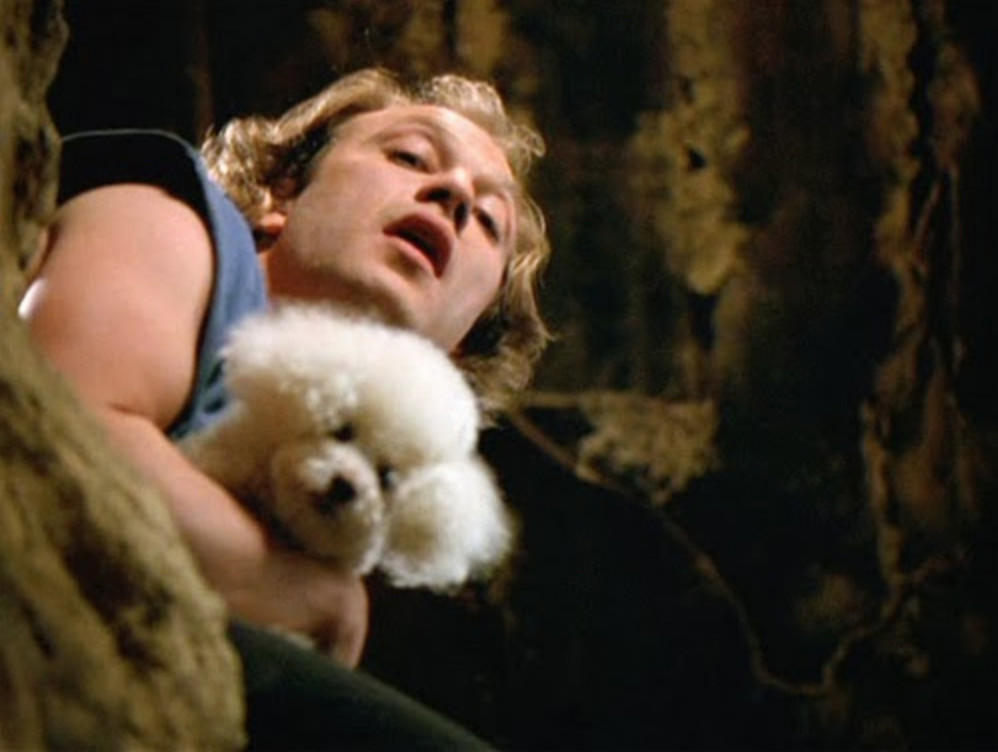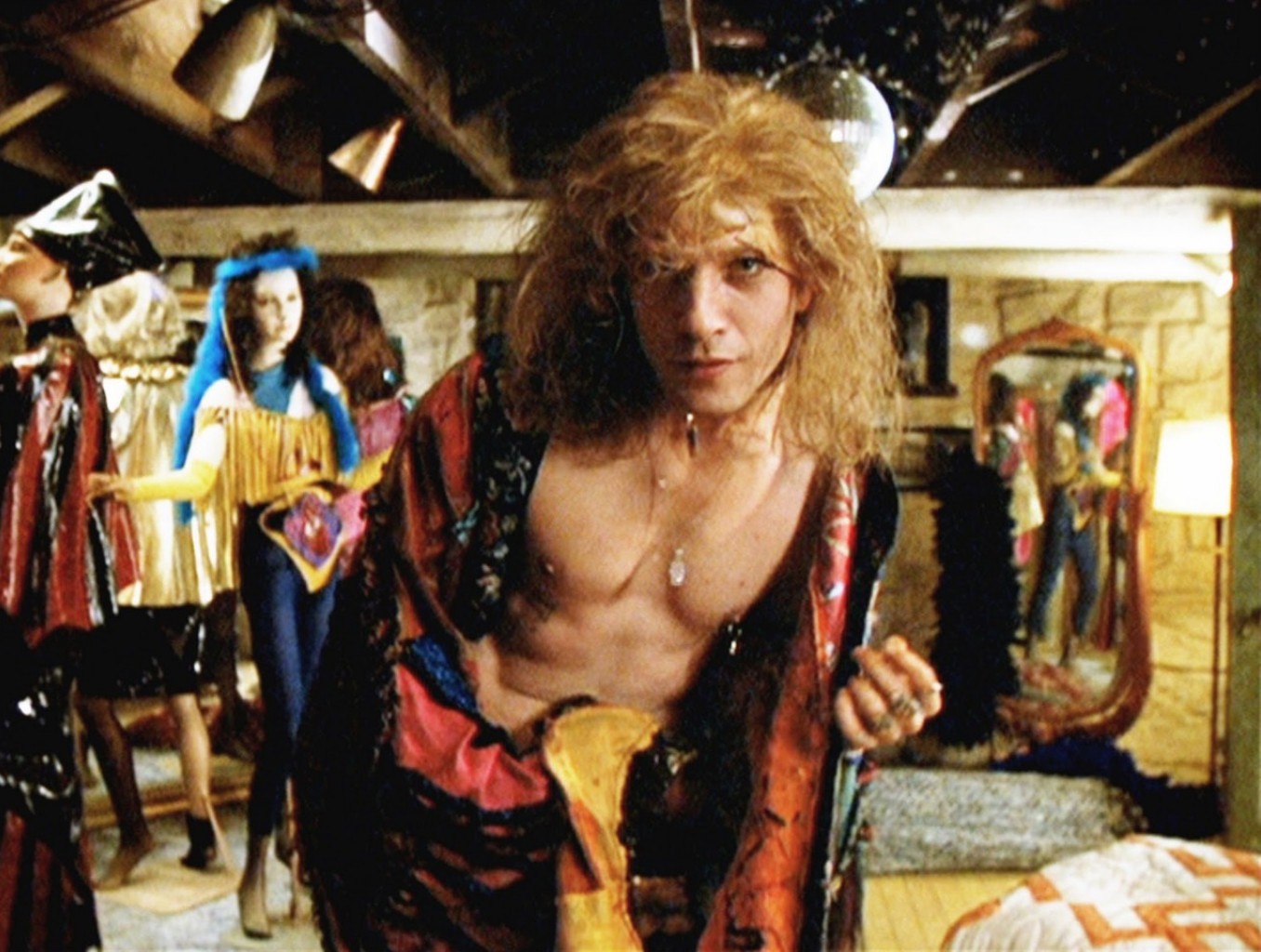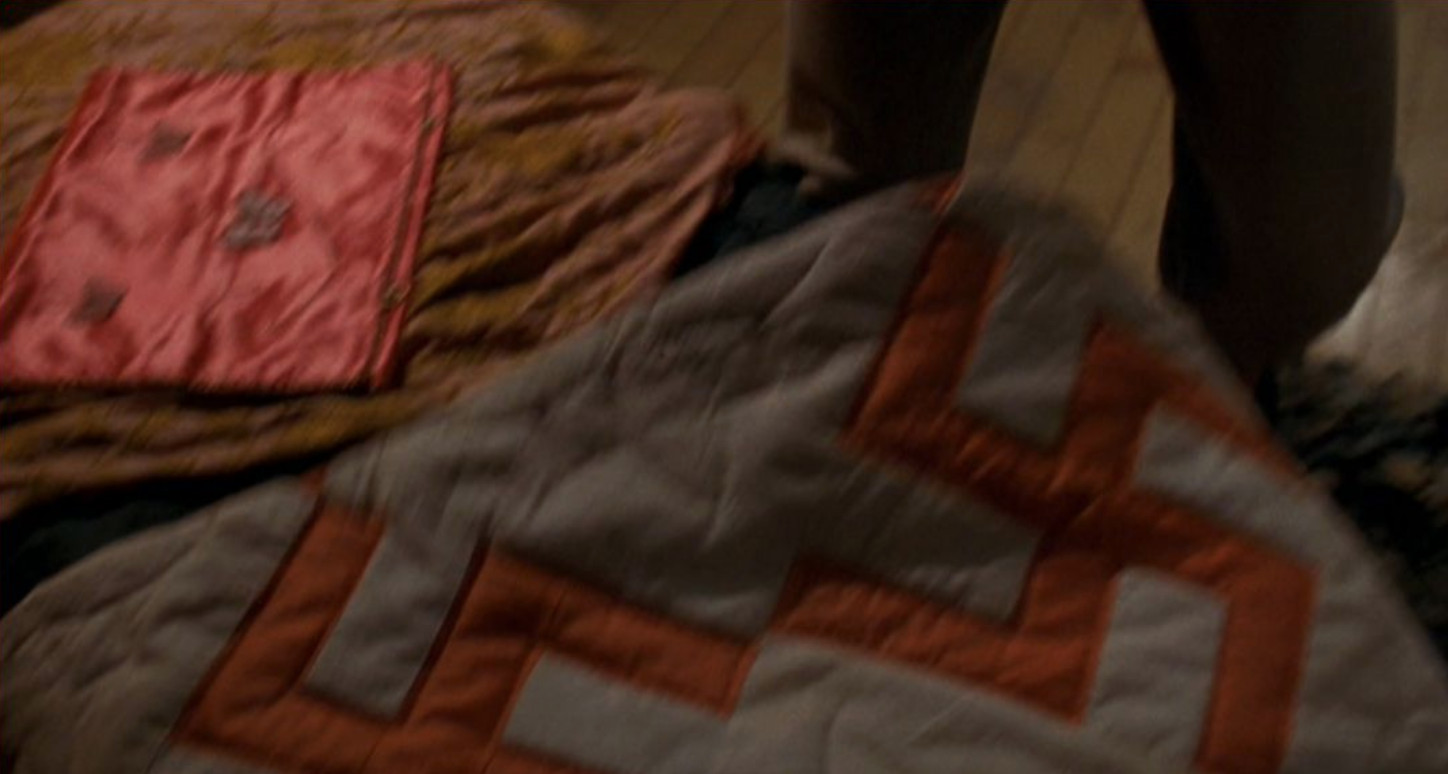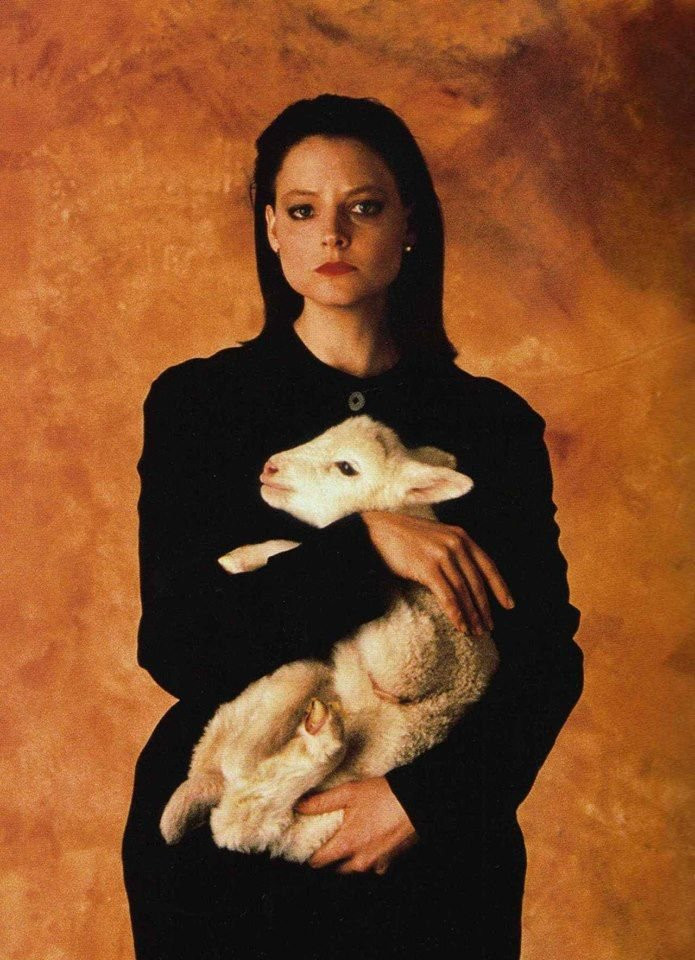Silence of the Lambs remains a cinematic masterpiece, yet it’s also shrouded in controversy. From its release, the film faced criticism for its portrayal of Jame Gumb, the infamous serial killer known as Buffalo Bill, hunted by FBI trainee Clarice Starling. Critics argued that Gumb perpetuated harmful stereotypes against gay and transgender individuals, culminating in protests during the Oscars ceremony where the film swept the major awards. However, Ted Levine, the actor who masterfully embodied Gumb, offers a contrasting perspective on his character.
The Controversy Unveiled
 ScreenHub-Movie-Silence of the Lambs
ScreenHub-Movie-Silence of the Lambs
[Image alt text: Scene from Silence of the Lambs movie poster showcasing Clarice Starling and Hannibal Lecter, highlighting the film’s thriller genre.]
The heart of the controversy lies within the character of Jame Gumb. In Silence of the Lambs, Gumb is depicted as a serial killer who preys on overweight women, tragically skinning them to create a ‘woman-suit’ in a grotesque attempt to transform his identity. Dubbed ‘Buffalo Bill’ by the media, Gumb leaves a moth in the throat of each victim, a chilling signature symbolizing his desired metamorphosis. Agent Clarice Starling is tasked with the daunting mission to track down this terrifying figure, seeking the unsettling assistance of incarcerated cannibalistic serial killer, Hannibal Lecter.
 ScreenHub-Movie-Silence of the Lambs Dance
ScreenHub-Movie-Silence of the Lambs Dance
[Image alt text: Buffalo Bill dance scene in Silence of the Lambs, Jame Gumb in women’s clothing, a pivotal and controversial moment in the film.]
Gumb’s character is layered with unsettling details: he owns a Bichon Frise named Precious, is seen dancing in women’s clothing and a scalp, and is implied to have had past homosexual relationships. These elements led many to believe that Buffalo Bill was a harmful stereotype of the LGBT community. However, the creators of Silence of the Lambs and actor Ted Levine strongly refuted these interpretations. Levine, in particular, developed a nuanced understanding of Gumb during filming.
Ted Levine’s Interpretation of Jame Gumb
 ScreenHub-Actor-Ted Levine
ScreenHub-Actor-Ted Levine
[Image alt text: Portrait of actor Ted Levine, known for his role as Buffalo Bill in Silence of the Lambs, discussing his character interpretation.]
Ted Levine’s portrayal of Jame Gumb is arguably his most iconic role, despite a successful career including his role in Monk. In the 2003 documentary, ‘Inside the Labyrinth: The Making of Silence of the Lambs‘, Levine detailed his extensive preparation and clarified his stance on Gumb’s sexuality:
There’s a lot of flack about him being gay. I never played him as being gay.
Levine immersed himself in research, studying serial killers who inspired Buffalo Bill in Thomas Harris’s novel, notably Ed Gein and Jerry Brudos, both known for skinning their victims. This research profoundly impacted Levine, leaving him with lasting disturbing images.
I had a good deal of time to work on the part before we started shooting. I read a great deal of material about serial killers. Not a fun process at all. I’ve lived with a lot of images that I still remember.
Further preparing for the role of Buffalo Bill, Levine explored the gay and transgender community. However, this exploration led him to a crucial realization: Jame Gumb’s motivations were distinct and not rooted in these identities. Levine’s experiences in bars frequented by crossdressers and transgender individuals were enlightening.
I met with female impersonators. I went to some very interesting bars looking and talking to people about a side of life that I’m not familiar with. And I came to the conclusion that none of that had anything really to do with this. If the guy was gay, he’d be killing and maiming boys and men and he was killing women.
 ScreenHub-Movie-Silence of the Lambs Jame Gumb
ScreenHub-Movie-Silence of the Lambs Jame Gumb
[Image alt text: Close-up of Jame Gumb from Silence of the Lambs, highlighting Ted Levine’s portrayal of a disturbed and complex character.]
Levine concluded that Gumb’s actions weren’t driven by his engagement with the LGBT community but by a deeper, more twisted psychology. He deliberately chose not to portray Gumb as gay. Instead, Levine aimed to depict a character consumed by self-loathing, masking his insecurities by projecting hatred towards homosexuals and transgender people.
[Image alt text: Another portrait of Ted Levine, emphasizing his thoughtful approach to acting and character development for roles like Buffalo Bill.]
The stance I took was more of an acutely homophobic heterosexual man doing that mocking thing. I kind of took it that he was sort of imitating the way his mother might have talked to the poodle. By hearing that voice, in a sense he’s sort of talking to himself. His inner poodle as it were. The other thing he’s not is he’s not a transvestite either or a transexual. He was playing with these ideas and he’s tried on a whole lot of personas, and just got hooked on this idea of dressing in a women’s skin.
Director Jonathan Demme shared concerns about potential misinterpretations of Gumb as a negative representation of LGBT people. He discussed these worries with Levine, who reassured him.
He was scared about the gay thing too, and I said ‘Don’t worry. This is not a gay character.’ You don’t want to beat that movie cliche over the head of the mincing homosexual.
Despite Levine’s intentions, he acknowledges the misinterpretations and has expressed understanding for those who were offended, even offering apologies to members of the community.
People really took it to heart and were offended by it. I’ve talked to people whose feelings were hurt about the characterization I did, and I apologize for that.
The Narrative Context
 ScreenHub-Movie-Silence of the Lambs
ScreenHub-Movie-Silence of the Lambs
[Image alt text: Promotional image for Silence of the Lambs showcasing the intense atmosphere and psychological thriller elements of the film.]
While Ted Levine and author Thomas Harris offer insights into Gumb’s character, the film itself provides further context. The novel elaborates more on Gumb’s backstory, clarifying that he is not inherently gay or transgender but is falsely presenting himself as such. Deleted scenes from the film further reinforce this. In the novel and some screenplay versions, Jack Crawford consults Dr. Danielson at a reassignment clinic. Dr. Danielson distinguishes between genuine transsexuals and individuals like Gumb, stating transsexuals are “decent people.” Crawford concurs, explaining:
[Image alt text: Scene between Clarice Starling and Jack Crawford in Silence of the Lambs, symbolizing the investigative and procedural aspects of the movie.]
The whole idea is, the man we want is not your patient. It would be someone you refused because you recognized that he was not a transexual.
These scenes were condensed or cut in the final film to maintain focus on Clarice’s perspective, as explained by screenwriter Ted Tally. This streamlining meant some depth regarding Gumb’s origins was lost.
We ended up having to lose references to his (Gumb’s) childhood and how he became this twisted creature that he is, which was unfortunate. He becomes something of a cipher in the movie. Not as rich as he is in the book. But it’s a 375 page book. You can’t save everything.
 ScreenHub-Movie-Silence of the Lambs
ScreenHub-Movie-Silence of the Lambs
[Image alt text: Another promotional still from Silence of the Lambs, emphasizing the suspense and cat-and-mouse dynamic between Clarice and the killers.]
Despite these cuts, crucial dialogues remain, especially in the exchanges between Lecter and Starling, which serve to clarify Gumb’s psychology. Starling herself notes:
There’s no correlation in the literature to transsexualism and violence. Transsexuals are very passive.
Hannibal Lecter famously dismisses the notion of Buffalo Bill being transgender, directly addressing the audience’s potential misconceptions.
Billy is not a real transexual. But he thinks he is. He tries to be. He’s tried to be a lot of things, I expect.
Lecter’s insights are designed to help both Starling and the audience understand the true nature of the villain. He reveals that Gumb’s relationship with Benjamin Raspail was another failed attempt at self-transformation. Gumb wasn’t genuinely homosexual but experimented with it, and when it didn’t provide the desired change, he murdered Raspail out of frustration and self-hatred.
 ScreenHub-Movie-Silence of the Lambs Nazi
ScreenHub-Movie-Silence of the Lambs Nazi
[Image alt text: A subtle detail from Silence of the Lambs set design, Nazi paraphernalia in Jame Gumb’s house, indicating his complex and disturbing psyche.]
Subtle visual cues, like the Nazi paraphernalia in Gumb’s home, further illustrate his fractured psyche. This detail hints at Gumb’s attraction to extremist ideologies that prey on insecurity and promise empowerment through distorted means. His skinning of victims, mirroring Nazi atrocities, becomes the ultimate act of dehumanization and possession. Ted Levine reiterates this motivation.
He wanted the power that he perceives a woman possesses. ‘I want you, so I’m gonna have you. I’m gonna have you completely in that I’m gonna skin you and crawl inside you.’
The Enduring Legacy of Silence of the Lambs
Despite the critical acclaim, the controversy surrounding Jame Gumb has somewhat shadowed the legacy of Silence of the Lambs. Jodie Foster, who identifies as lesbian, offered her perspective on the backlash.
 ScreenHub-Actor-Jodie Foster
ScreenHub-Actor-Jodie Foster
[Image alt text: Portrait of Jodie Foster, actress in Silence of the Lambs, reflecting on the film’s legacy and the controversy surrounding Jame Gumb.]
Our film sort of got lumped in with Basic Instinct where some of the more activist groups really felt that it portrayed a gay character as being psychopathic, and that audiences would be confused into believing that if you were gay or transgender then that must mean you’re a serial killer. I think it has vanished from the legacy of the film because on further inspection, I think people really realize that was kind of a superficial reading of the movie.
Foster’s assessment is insightful. While a superficial viewing of Silence of the Lambs, particularly the Buffalo Bill Dance From Silence Of The Lambs scene, might suggest harmful stereotypes, a deeper analysis reveals a more complex character. Jame Gumb is a deeply disturbed individual who perverts sexual and gender identity in his desperate quest for transformation. Levine’s performance crafts a chilling villain, and focusing solely on the controversy risks overlooking the film’s central theme: a woman’s triumph over a monstrous man who objectifies and destroys women.
